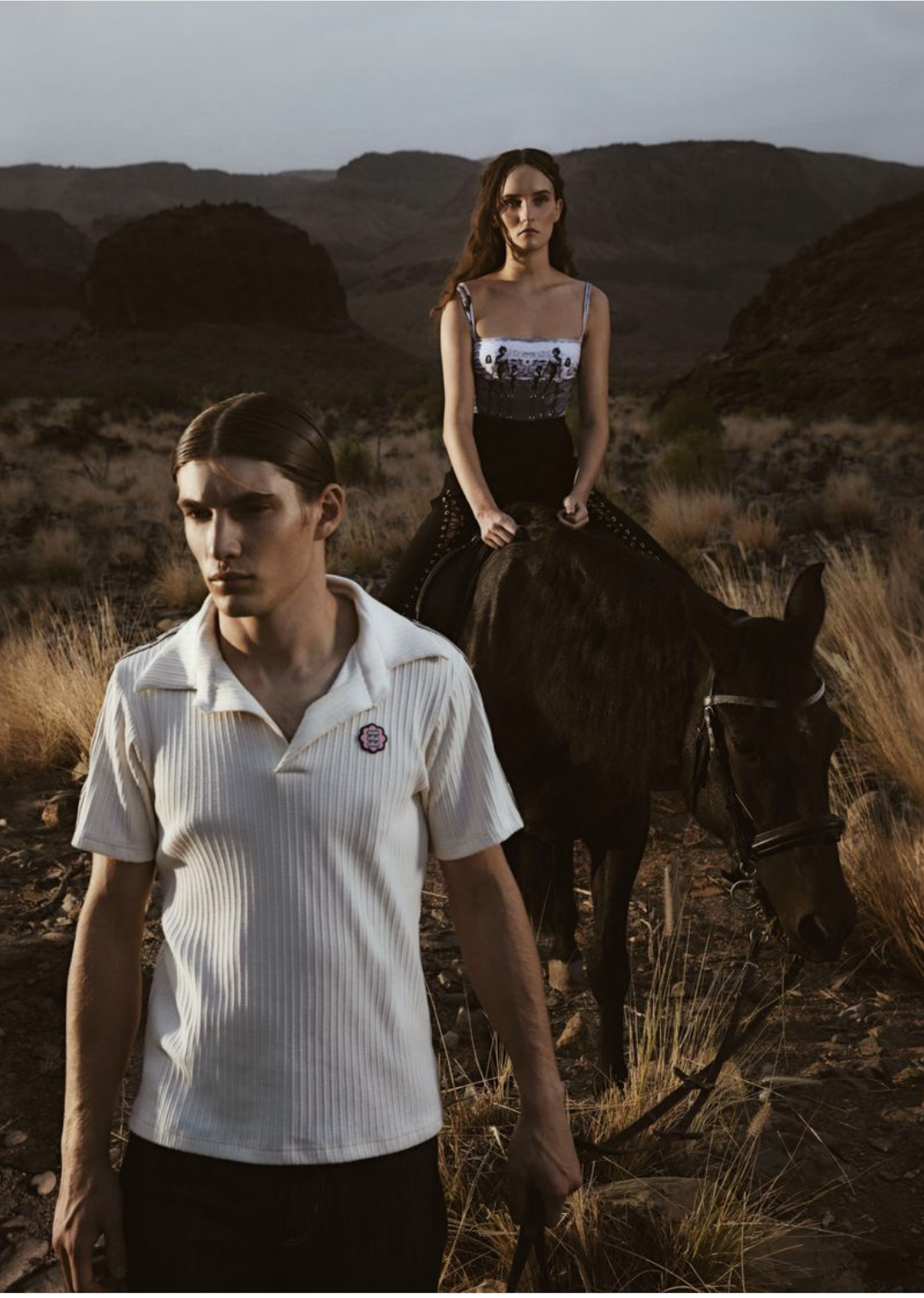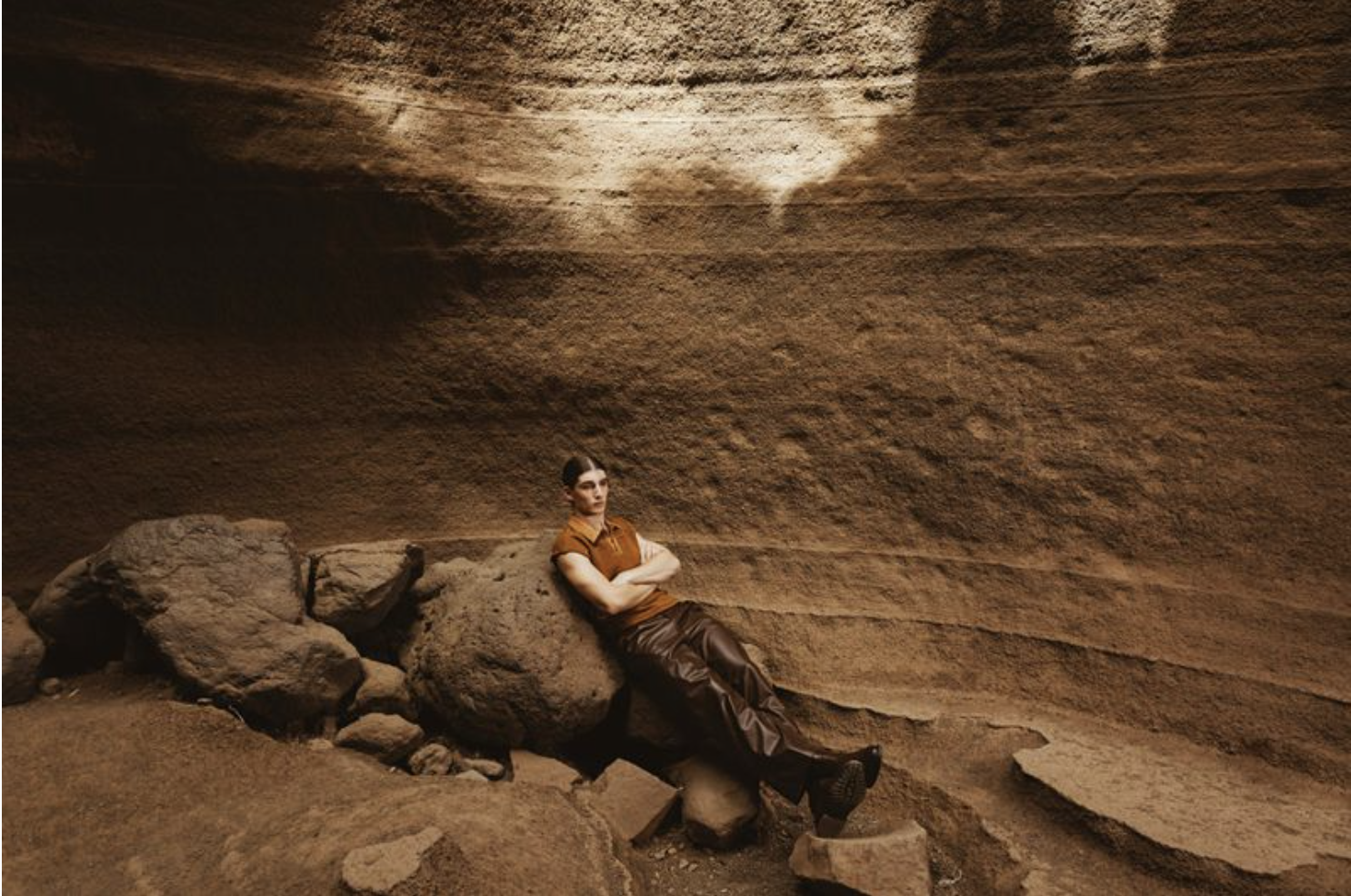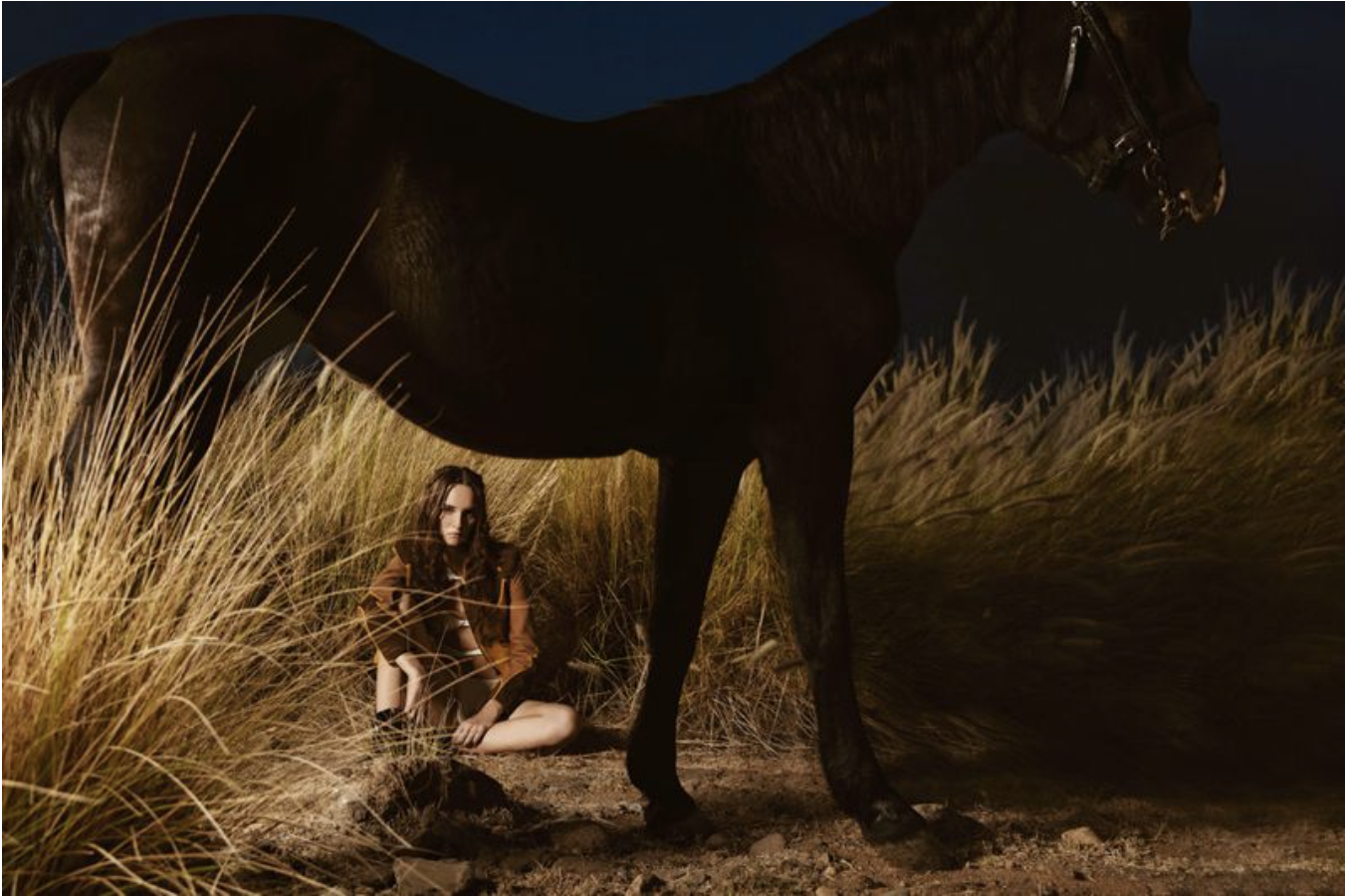Ana Abril in Gran Canaria for Muyer Hoy's February 2024 Rugged Style Fashion
/Muyer Hoy’s February 2024 issue takes us to Gran Canaria’s incredible landscape of coastline. ‘Ruta Salvaje’ [Wild Route] is lensed by Ana Abril [IG] on the island often called a ‘miniature continent’.
On a single day, guests and locals can enjoy marvellous beaches surrounded by dunes before climbing peaks covered in Canary Island pine forests. Their greenery stands out starkly against the dark volcanic earth, from which the Canary Islands were formed.
Models Luna Molina and Joel Cullel are styled by Lara Bosch in a go-west fashion story, working with fashion director Gervasio Pérez. / Hair and makeup by Yurena Cazorla
Cowboys and Cowgirls Are Hot Stuff!
The American West trend of Black cowboys, a topic AOC is writing about, was front and center in the recent Louis Vuitton Pharrell Williams menswear show on January 16, 2024.
This historical focus of American cowboys of color just got another pop culture boost by Béyoncé becoming the first Black woman to reach the US No 1 country music spot, with her new single ‘Texas Hold ’Em’.
Thanks to these two mega talents — Pharrell and Beyoncé — and my AI assistant Lulu, the second American cowboys article is being written all by itself. No pun intended, but it’s a lulu.
Following on Monday’s Txema Yeste Numero 245 fashion story from ‘Fuertentura’, also in the Canary Islands, I queried Lulu further on the history of the islands.
About Gran Canaria
Gran Canaria is one of the Canary Islands, known for its rich history and diverse culture. The island was originally inhabited by the indigenous Guanche people before the Spanish conquest in the 15th century. The Guanches lived a simple life, relying on agriculture and livestock.
I asked Lulu if Gran Canaria played a significant role in the slave trade, after she noted the historical importance of ships in port. She pointed me back to the Txema Yeste story from Monday regarding my question about the slave trade and the Canary Islands most involved.
Then she added that only some boats arriving in the Gran Canaria harbor were carrying slaves to the Americas. The boats were often carrying sugar cane out of Gran Canaria harbor, along with other provisions.
So Anne rephrased her question to query if the Guanche people were enslaved by the Spanish to grow sugar cane on Gran Canaria. Lulu’s answer was affirmative.
In some respects, to get the maximum research and learning benefit of AI, one must act like a prosecuting attorney getting an answer from a friendly witness.
Gran Canaria is one of the Canary Islands, known for its rich history and diverse culture. The island was originally inhabited by the indigenous Guanche people before the Spanish conquest in the 15th century. The Guanches lived a simple life, relying on agriculture and livestock.
After the Spanish colonization, Gran Canaria became an important stopover for ships traveling to the Americas, contributing to its strategic significance. The island prospered due to trade and agriculture, particularly sugar cane production.
Throughout its history, Gran Canaria has faced attacks from pirates and privateers, leading to the construction of various forts and defensive structures that can still be seen today.
In the 20th century, Gran Canaria emerged as a popular tourist destination, attracting visitors with its stunning beaches, vibrant nightlife, and unique landscapes. Today, the island blends its rich history with modern amenities, offering visitors a glimpse into its past while providing a range of contemporary attractions.
After the Spanish colonization, Gran Canaria became an important stopover for ships traveling to the Americas, contributing to its strategic significance. While some of the ships stopping at Gran Canaria during that time period were involved in the transatlantic slave trade, not all of them were exclusively dedicated to transporting enslaved individuals. The island served as a crucial point for provisioning, restocking supplies, and conducting repairs, making it a key link in the broader network of maritime trade routes.
The Gran Canaria Guanche people were indeed enslaved to harvest sugar cane during the Spanish colonization of the Canary Islands in the 15th century. The Guanches, the indigenous people of the Canary Islands, were forced into labor by the Spanish colonizers to work on sugar plantations established on the islands. This exploitation of the Guanche people as laborers in the sugar cane fields contributed to the harsh conditions they faced during this period.
American country music originated in the Southern United States in the early 20th century. It has roots in various music styles such as folk music, blues, and western music. The genre is known for its storytelling lyrics, often revolving around themes of love, heartbreak, rural life, and everyday struggles. Influential early country musicians like Jimmie Rodgers and the Carter Family helped shape the sound and themes of country music as we know it today. Over the years, country music has evolved and diversified, incorporating elements of rock, pop, and other genres while still maintaining its distinctive sound and storytelling tradition.
Country music did not originate solely in Texas, but the state played a significant role in shaping the genre. The roots of country music are traced back to various regions in the United States, including the Appalachian Mountains, the Southeast, and the Midwest.
In Texas, the unique blend of musical traditions such as folk, blues, and western swing contributed to the distinctive sound of country music. Artists like Bob Wills and his Texas Playboys popularized western swing, a subgenre of country music known for its upbeat tempo and jazzy influences.
Furthermore, Texas has been home to iconic venues like the Grand Ole Opry and Austin City Limits, where country music artists have showcased their talent and helped to define the genre. The state's rich cultural heritage and deep connection to cowboy folklore have also influenced the lyrical themes and storytelling aspect of country music.
While Texas may not be the sole birthplace of country music, its contributions have been invaluable in shaping the genre into what it is today.
Early country music in Texas did indeed have lyrics about cowboys, reflecting the cowboy culture that was prevalent in the state during that time. Songs often featured themes such as the cowboy way of life, riding on the open range, cattle drives, and the struggles and triumphs of cowboys. These lyrics celebrated the rugged individualism and adventurous spirit of cowboys, portraying them as heroes of the American West. The cowboy persona was a central element of early Texas country music, resonating with audiences who romanticized the frontier lifestyle and values of independence, hard work, and resilience.
In early Texas cowboy country music, lyrics commonly celebrated the camaraderie and hard work of cowboys from diverse backgrounds, including white, black, and Mexican cowboys working together on the ranches. These songs often portrayed a sense of unity and shared experiences among cowboys, regardless of their racial or ethnic backgrounds. The music highlighted the challenging yet rewarding lifestyle of cowboys and the bonds formed through laboring side by side on the open range. Overall, early Texas cowboy country music reflected a sense of inclusivity and mutual respect among cowboys of different races and cultures.





















